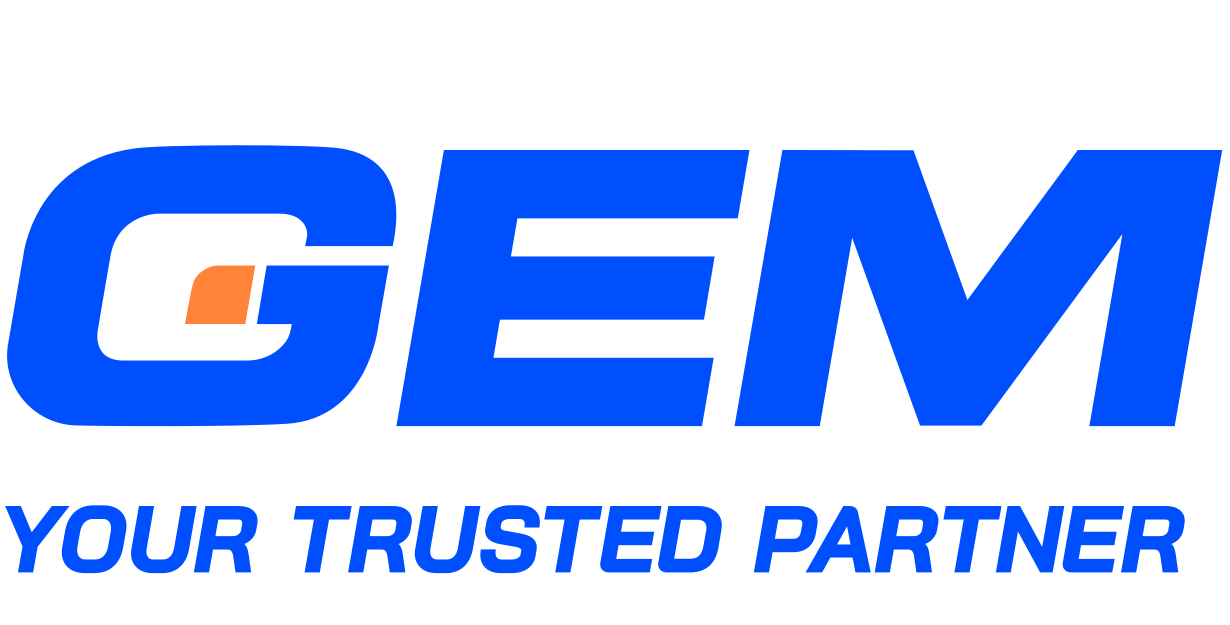Contents
- What Are Data Warehouse Solutions?
- Key Capabilities of Modern Data Warehouse Solutions
- Strategic Impact of Data Warehousing for Business
- Best Data Warehouse Solutions to Consider in 2025
- Framework for Choosing the Right Data Warehouse Solution
- 1. Define Use Cases and Data Strategy
- 2. Assess Integration Requirements
- 3. Match Performance Needs with Architecture
- 4. Evaluate Scalability and Deployment Flexibility
- 5. Review Security, Compliance, and Governance Capabilities
- 6. Consider Total Cost of Ownership (TCO)
- 7. Align with Internal Capabilities
- Emerging Trends in Data Warehousing (2025 and Beyond)
- Implementing the Right Data Warehouse Strategy with GEM Corporation
- Make your digital transformationseamless and future-ready
- Conclusion
The demand for data warehouse solutions is accelerating as organizations handle growing data volumes and pursue faster, more reliable insights. The global market is estimated at $34.9 billion in 2024 and is forecasted to grow sharply, potentially surpassing $75 billion by 2033 (Mordor Intelligence). This shift is tied to rising business intelligence needs, cloud adoption, and the push for scalable analytics platforms. In this article, we’ll explore the core capabilities of modern data warehouse solutions, their strategic role in business operations, leading platforms in 2025, and how to evaluate them based on your organization’s needs. Let’s start with what defines a data warehouse solution today.
What Are Data Warehouse Solutions?

Data warehouse solutions are centralized systems built to consolidate, store, and manage large volumes of structured data from various internal and external sources. They serve as a foundational layer for analytics, enabling organizations to perform complex queries, generate reports, and support decision-making processes.
These platforms are optimized for analytical workloads, offering high performance when processing historical data and aggregating insights across departments. By acting as a unified data repository, data warehouses help eliminate inconsistencies across systems and provide a consistent view of business performance. Their role is central in delivering reliable, governed data for business intelligence and enterprise reporting.
Key Capabilities of Modern Data Warehouse Solutions

Modern data warehouse platforms are equipped with a range of capabilities that support enterprise analytics at scale. These capabilities are designed to meet growing demands for accuracy, performance, and governance.
Data integration
Combine data from systems such as CRM, finance, operations, and marketing into a single structured environment. This supports unified reporting and analysis.
Analysis and reporting
Process large volumes of data to support advanced queries, dashboard creation, and ad hoc reporting across business functions.
Historical data storage
Process large volumes of data to support advanced queries, dashboard creation, and ad hoc reporting across business functions.
Business intelligence foundation
Serve as the primary data source for BI tools, helping teams access trusted data for operational and strategic reporting.
Data quality management
Include pipelines for data loading and transformation, helping standardize formats, remove duplication, and flag inconsistencies before storage.
Security and compliance
Support role-based permissions, encryption, and activity monitoring to align with internal policies and external regulatory frameworks.
Scalability and elasticity
Built to adapt to growing data volumes and user demand, particularly in cloud-based environments where workloads vary by use case.
Data catalog and lineage tracking
Provide tools to trace data origins, transformations, and usage, improving transparency and audit readiness.
Query performance optimization
Designed with indexing, partitioning, and in-memory processing to deliver faster results for both scheduled and on-demand queries.
These capabilities support organizations aiming to organize their data assets, streamline analytics workflows, and build a more consistent approach to data use across teams.
Strategic Impact of Data Warehousing for Business

Data warehousing influences how organizations govern, access, and apply their data assets. It introduces a structured approach to information management, helping business units access consistent insights while improving operational alignment. Its impact extends across both day-to-day decision-making and longer-term planning.
Key areas where data warehousing drives measurable outcomes include:
Faster decision cycles
With centralized access to governed data and the availability of self-service BI tools, teams can generate reports and visualizations without routing every request through IT. This leads to quicker assessments and more agile responses to market or operational changes.
Cross-functional visibility
A shared repository eliminates fragmented reporting. When departments rely on the same data sets, it becomes easier to align on performance indicators, detect discrepancies, and coordinate strategic initiatives.
Auditability and governance
Data warehouses support structured access control, lineage tracking, and logging. These features help organizations demonstrate accountability, especially in sectors subject to external audits or internal compliance checks.
Foundational support for AI and ML
Structured, historical data is required to build and validate models. A well-managed warehouse improves data consistency and availability, reducing barriers for teams working on forecasting, recommendation engines, or anomaly detection.
Best Data Warehouse Solutions to Consider in 2025

The data warehousing landscape in 2025 continues to evolve, with platforms adapting to cloud-native architectures, AI-driven analytics, and enterprise demands for scale and control. Below is a categorized view of leading data warehouse providers based on deployment models and business focus.
Cloud Data Warehouse Platforms
Snowflake
Snowflake remains one of the most widely adopted cloud-native data warehouse platforms. Built on a multi-cluster, shared-data architecture, it separates storage from compute, allowing businesses to scale each component based on workload demands. It supports deployment across AWS, Azure, and Google Cloud, offering flexibility for multi-cloud strategies. With near-zero maintenance, support for structured and semi-structured data, and fast onboarding, Snowflake is a strong fit for organizations building modern analytics environments with growing data needs.
Google BigQuery
BigQuery is a fully managed, serverless data warehouse from Google Cloud. It handles vast datasets with minimal infrastructure management and offers built-in ML capabilities, real-time analytics, and native integration with tools like Looker and Data Studio. BigQuery excels in performance and scalability, making it well-suited for businesses that prioritize speed and embedded intelligence. Its pay-per-query model also supports cost visibility and planning.
Amazon Redshift
Redshift, one of the earliest entrants in the cloud data warehousing space, is tightly integrated with the AWS ecosystem. Recent updates introduced Redshift Serverless and the decoupling of storage and compute, aligning it more closely with modern cloud platforms. It supports petabyte-scale workloads and offers strong performance tuning options, though it often requires more hands-on configuration compared to Snowflake or BigQuery. Redshift remains a reliable choice for teams already embedded in AWS infrastructure.
Azure Synapse Analytics
Previously branded as Azure SQL Data Warehouse, Synapse Analytics extends beyond traditional warehousing to offer full-spectrum analytics. It combines T-SQL-based querying with Spark support, pipelines, and data integration tools. Synapse is particularly useful for organizations already using Microsoft’s enterprise software stack. Features like dynamic data masking, native Power BI integration, and flexible compute options make it a practical option for hybrid analytics environments.
Databricks
Databricks is known for its lakehouse architecture, combining the scalability of data lakes with the governance and performance of data warehouses. It supports both structured and unstructured data and is optimized for advanced analytics, machine learning, and streaming data workloads. The collaborative workspace and support for multiple programming languages (SQL, Python, Scala) make Databricks a preferred platform for data engineering and data science teams working together.
Enterprise-Focused Platforms
IBM Db2 Warehouse
Db2 Warehouse offers in-memory processing, high availability, and built-in machine learning features. It’s designed for enterprise workloads, with integration options for IBM Cloud Pak, Netezza, and other enterprise tools. Organizations using IBM’s software ecosystem will find Db2 well-aligned, although its usability and cost model may pose challenges for smaller teams or new adopters.
Teradata Integrated Data Warehouse
Teradata continues to serve large-scale enterprise clients with complex analytics needs. Its platform supports mixed workloads, robust security, and high concurrency. With deployment options spanning on-premises, private cloud, and public cloud, Teradata appeals to organizations requiring flexible architecture and deep operational control.
SAP BW/4HANA
SAP’s BW/4HANA platform is purpose-built for enterprises with large-scale ERP environments. It leverages the HANA in-memory database to deliver high-speed analytics and deep integration with SAP applications. For companies already on the SAP stack, BW/4HANA provides a tightly integrated solution with native support for financial, logistics, and HR data models.
Open-Source and Hadoop-Based
Apache Hive
Hive is an open-source data warehousing solution built on top of Hadoop, designed for batch processing of large datasets. It uses a SQL-like language called HiveQL, making it accessible for teams familiar with relational query syntax. Hive is best suited for organizations managing high-volume, long-term data storage and processing in distributed environments. Though it lacks the ease-of-use and performance optimizations of newer platforms, it remains relevant for specific use cases in data lake architectures.
Framework for Choosing the Right Data Warehouse Solution
Selecting a data warehouse solution is a strategic decision that shapes how an organization collects, manages, and analyzes data across departments. A structured evaluation framework aligns the platform’s technical capabilities with business goals, budget constraints, and long-term data maturity plans.
1. Define Use Cases and Data Strategy
Begin by outlining the primary goals of the data warehouse. Are you supporting real-time analytics, long-term trend analysis, or AI model training? Identify the types of data (structured, semi-structured, unstructured), expected query workloads, and user groups – BI analysts, data scientists, or both.
2. Assess Integration Requirements
Evaluate how well the platform integrates with your existing data sources, including ERP, CRM, marketing automation tools, and external APIs. Consider whether the platform supports your preferred ETL/ELT tools, as this will influence data pipeline design and maintenance overhead.
3. Match Performance Needs with Architecture
Assess query performance, concurrency support, and workload isolation. Cloud-native platforms like Snowflake and BigQuery offer separation of storage and compute, which helps manage performance during peak usage. If your workloads involve frequent complex queries or high user concurrency, the platform’s ability to optimize query execution becomes a key differentiator.
4. Evaluate Scalability and Deployment Flexibility
As data volumes grow, the platform should support seamless horizontal scaling. Consider whether the solution is available as a fully managed service, hybrid deployment, or on-premises option. Multi-cloud or cloud-agnostic support may also be important for avoiding vendor lock-in.
5. Review Security, Compliance, and Governance Capabilities
Ensure the platform supports encryption, role-based access control, and compliance with standards such as GDPR, HIPAA, or CCPA. Built-in data lineage, auditing, and cataloging features simplify governance and improve trust in data assets across teams.
6. Consider Total Cost of Ownership (TCO)
Cost control remains a growing concern, especially in cloud-based environments. Review pricing models – pay-per-query, reserved capacity, or usage-based, and estimate costs under realistic workloads. Platforms offering automated scaling and monitoring tools can help with ongoing cost management.
7. Align with Internal Capabilities
Consider the technical expertise of your internal teams. A platform that requires extensive configuration may slow adoption if your team is unfamiliar with advanced tuning or scripting. Platforms with intuitive interfaces, strong documentation, and partner ecosystems can reduce onboarding time and operational complexity.
Emerging Trends in Data Warehousing (2025 and Beyond)

The data warehousing space is entering a phase of architectural and operational transformation. Several trends are reshaping how enterprises approach storage, performance, and cost efficiency.
- Rise of data lakehouse architectures
Solutions like Databricks are driving interest in unified architectures that combine the governance of data warehouses with the flexibility of data lakes. These platforms support both structured and semi-structured data in a single environment, reducing duplication and simplifying data pipelines.
- Expansion of multi-cloud and hybrid environments
As organizations diversify their cloud strategies, data warehouses are increasingly expected to operate across multiple public clouds and on-premises systems. This shift is leading to more demand for portability, interoperability, and vendor-neutral architectures.
- Movement toward real-time data processing
Batch-based processing is still common, but organizations are investing in near real-time or streaming capabilities to support faster operational decisions. This is particularly relevant in sectors like retail, logistics, and financial services, where timing influences outcomes.
- Integration of AI/ML into core data workflows
Data warehousing platforms are embedding AI/ML features to support automated data classification, anomaly detection, and query recommendations. This integration reduces manual effort and supports more scalable analytics.
- Greater focus on cost governance
As cloud data warehouse usage grows, enterprises are putting more emphasis on monitoring usage patterns, managing compute costs, and optimizing storage. FinOps practices are being adopted to ensure data platform spending aligns with business priorities.
Implementing the Right Data Warehouse Strategy with GEM Corporation

GEM Corporation delivers high-impact technology solutions for enterprises and fast-scaling startups across Japan, Asia-Pacific, and Europe. Since 2014, we’ve helped organizations modernize their technology foundation with secure, scalable systems built by over 400 experienced professionals. Our reputation is grounded in consistent delivery, stringent quality standards, and globally recognized certifications, including ISO/IEC 27001:2022, ISO 9001:2015, CMMI Level 3, and ISTQB Gold Partner status.
Today, most enterprises are not building data warehouses from scratch. They are implementing, customizing, or migrating to modern platforms that align with their evolving data strategy. At GEM, we design and execute implementation roadmaps tailored to a client’s existing architecture, industry-specific requirements, and analytics objectives. Our teams specialize in platform selection, data modeling, integration, and performance tuning across leading systems such as Snowflake, BigQuery, Redshift, and Azure Synapse. As an official consulting partner of Databricks, we bring advanced expertise in lakehouse architecture – supporting unified analytics, data engineering, and machine learning in a single environment. Whether migrating from legacy on-premise systems or optimizing a cloud-native warehouse, GEM ensures each deployment is built for scale, governance, and long-term value.
Make your digital transformation
seamless and future-ready
Accelerate your business growth with zero-disruption modernization services. Maximize the value of your current infrastructure, streamline processes, and cut expenses.
Conclusion
Choosing the right data warehouse solutions demands alignment with your business strategy, data maturity, and long-term objectives. A successful deployment depends on platform capabilities and adoption across teams, governance practices, and clarity around data ownership. As analytics requirements grow and data sources multiply, regular assessment becomes necessary to keep your architecture relevant and efficient. Organizations that treat the data warehouse as a living part of their digital infrastructure are better positioned to scale insights and value. To explore a solution tailored to your needs, connect with GEM Corporation today.






